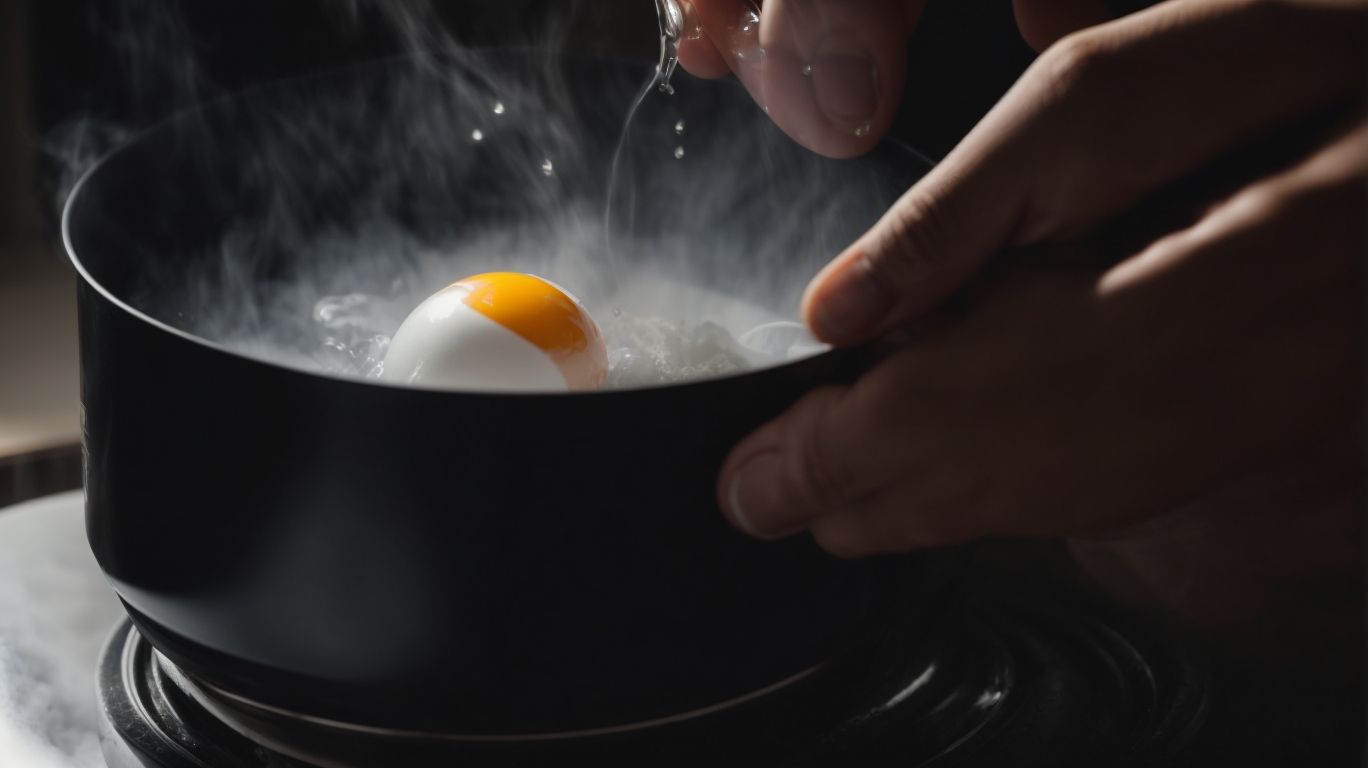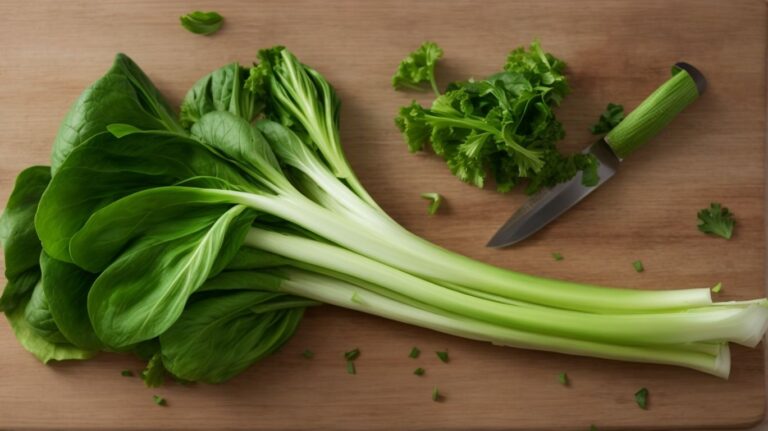How to Cook Eggs for Eggs Benedict?
Are you a fan of Eggs Benedict but unsure of how to make it at home?
In this article, we will dive into the world of Eggs Benedict, a classic breakfast dish loved by many.
From the essential ingredients needed to how to poach eggs perfectly, to assembling and plating the final dish, we’ve got you covered.
Join me, Chris Poormet, as we explore the steps to creating the perfect Eggs Benedict, only on Poormet.com.
Key Takeaways:
1. Perfect Eggs Benedict requires attention to detail, from poaching the eggs to creating delicious Hollandaise sauce.
2. The key ingredients for Eggs Benedict include English muffins, Canadian bacon or ham, and a tangy Hollandaise sauce made with lemon juice and butter.
3. To create the perfect poached eggs for your Eggs Benedict, use a whirlpool method and cook for 3-4 minutes.
About Chris Poormet and Poormet.com
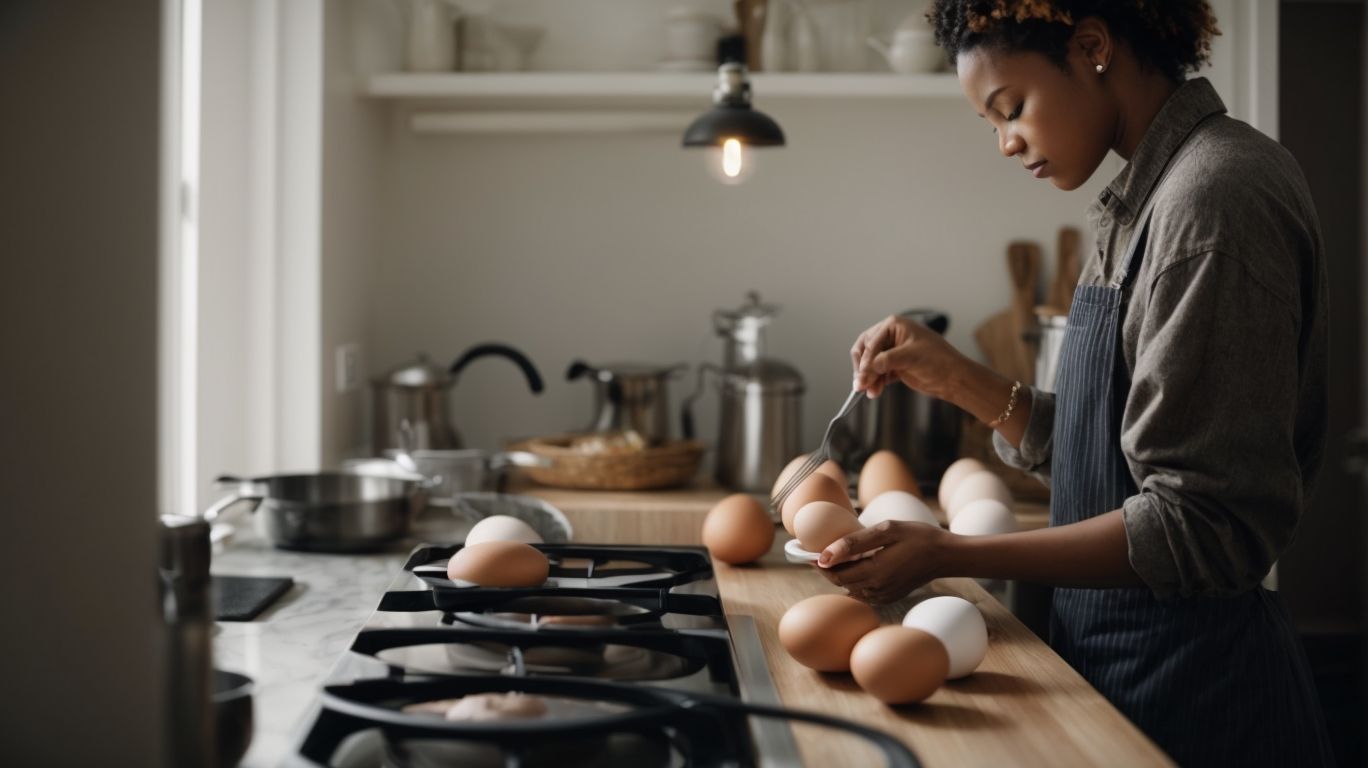
Credits: Poormet.Com – Bruce Moore
Chris Poormet, the owner of Poormet.com, is an accomplished culinary blogger recognized as the ‘Culinary Blogger of the Year’.
With a passion for cooking that started in his childhood kitchen, Chris Poormet has carved out a space for himself in the competitive world of culinary blogging. His blog, Poormet.com, serves as a hub for food enthusiasts seeking innovative recipes and culinary inspiration. Through his engaging writing style and visually stunning food photography, Chris has garnered a loyal following of readers who eagerly anticipate his latest creations. His dedication to sharing accessible and delicious recipes has not only earned him the title ‘Culinary Blogger of the Year’ but also catapulted him to the forefront of the online food blogging community.
What is Eggs Benedict?
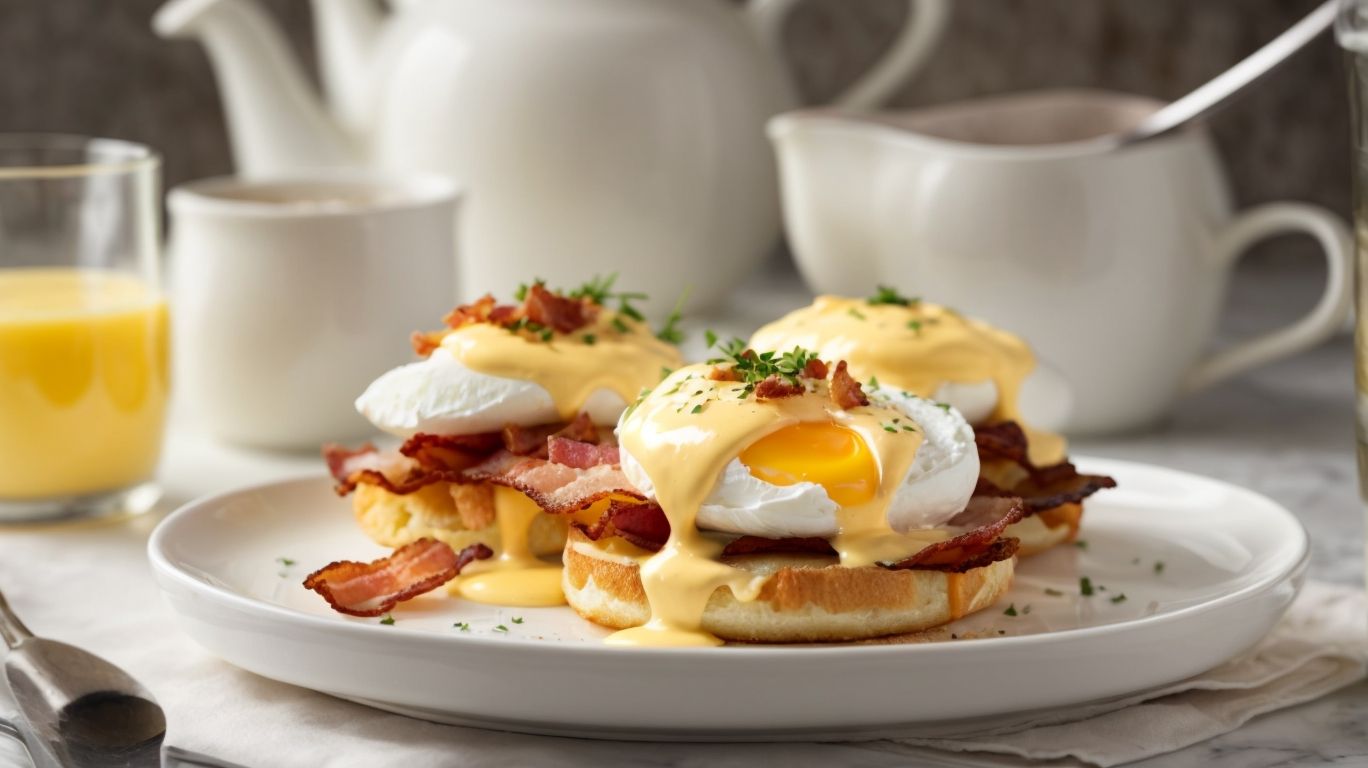
Credits: Poormet.Com – Ronald Gonzalez
Eggs Benedict is a classic and popular meal known for its traditional preparation and delightful flavors.
Originating in New York City in the late 19th century, this decadent dish typically consists of a toasted English muffin topped with savory Canadian bacon, a perfectly poached egg, and velvety hollandaise sauce.
The marriage of textures and flavors in Eggs Benedict perfectly balances the richness of the hollandaise sauce with the saltiness of the bacon and the creaminess of the poached egg, creating a harmonious medley that delights the taste buds.
Its popularity and versatility have led to a myriad of variations, such as replacing the Canadian bacon with smoked salmon for a luxurious twist or incorporating avocado for a modern and trendy take on the classic recipe.
What Ingredients Do You Need for Eggs Benedict?

Credits: Poormet.Com – Wayne Johnson
To create delicious Eggs Benedict, you will need a combination of key ingredients including English Muffins, Canadian Bacon, Eggs, Butter, Hollandaise Sauce, Lemon Juice, Salt, and Pepper.
English Muffins serve as the base of this classic dish, providing a sturdy foundation to soak up the rich flavors. Canadian Bacon adds a savory and slightly salty element that complements the eggs perfectly. Eggs are poached to just the right consistency, with the yolks ideally flowing when served. Butter is used for toasting the muffins, enhancing their flavor and texture.
Hollandaise Sauce is the star of the show, a luxurious and creamy emulsion of egg yolks and butter, flavored with a hint of lemon juice for a tangy kick. A pinch of salt and pepper helps balance the flavors, elevating the overall taste profile of Eggs Benedict.
English Muffins
English Muffins play a crucial role in the foundation of Eggs Benedict, providing a toasty base for the delectable toppings.
These unique round bread slices, known for their spongy texture and slightly crispy crust, are the perfect vessel to soak up the rich and creamy hollandaise sauce that is a hallmark of this classic dish. The process of toasting the muffins not only adds a delightful crunch but also helps to enhance their flavor profile, creating a sturdy yet flavorful base for the poached eggs and savory Canadian bacon that sit atop them.
Canadian Bacon or Ham
Canadian Bacon or Ham adds a savory and meaty element to Eggs Benedict, complementing the flavors of the dish.
One of the key reasons why Canadian Bacon or Ham is favored in Eggs Benedict is its unique flavor profile. The richness and saltiness of the bacon perfectly balance the creamy hollandaise sauce, creating a delightful contrast that tantalizes the taste buds. The texture of the ham adds a satisfying bite to each mouthful, elevating the overall dining experience.
Eggs
Eggs are a key component in Eggs Benedict, particularly when prepared as perfectly poached eggs with a runny yolk and firm egg whites.
When making Eggs Benedict, achieving the ideal poached egg consistency is crucial for the dish’s overall success. The process of poaching eggs involves gently cracking them into simmering water, typically with a splash of vinegar to help the egg whites coagulate faster. This method ensures that the yolk remains creamy and enticing while the whites set beautifully. Poaching requires a delicate balance of time and temperature to achieve the desired texture. A perfectly poached egg should have a soft, velvety yolk that oozes out when cut into, creating a luscious sauce for the Benedict.
Butter
Butter adds richness and flavor to Eggs Benedict, contributing to the overall indulgent experience of the dish.
When preparing Eggs Benedict, incorporating butter into the hollandaise sauce not only creates a velvety smooth texture but also infuses a delightful buttery taste that complements the creamy, tangy notes of the dish perfectly.
Using butter to toast the English muffins before layering on Canadian bacon and poached eggs adds a delicious crispy exterior and a rich aroma that enhances the overall sensory experience.
The indulgent richness that butter brings to this classic brunch dish elevates it to a luxurious treat that is sure to impress your taste buds.
Lemon Juice
Lemon Juice provides a tangy and citrusy kick to the hollandaise sauce, elevating the flavors of Eggs Benedict.
The text is already properly formatted with the
tag. No further formatting changes are needed.
Hollandaise Sauce
Hollandaise Sauce is a classic component of Eggs Benedict, known for its creamy texture and buttery flavor.
This luxurious sauce is a key element that ties together the whole dish, adding a rich and velvety touch to the poached eggs and crispy English muffin. It is a delicate emulsion of egg yolks, butter, lemon juice, and a hint of cayenne pepper, requiring a skilled hand to achieve the perfect consistency.
- Traditionally, Hollandaise Sauce is made by whisking egg yolks over gentle heat, slowly incorporating melted butter to create a smooth and glossy finish.
- Its history dates back to French cuisine, where it was an essential component in haute cuisine, elevating simple dishes to gourmet status.
- The process of making Hollandaise Sauce may seem daunting at first, but with practice and attention to detail, mastering this sauce can enhance various dishes, not just Eggs Benedict.
Salt and Pepper
Salt and Pepper are essential seasonings that add depth and flavor to Eggs Benedict, ensuring a well-balanced taste profile.
When Salt is sprinkled over the poached eggs, it enhances their natural flavors while also balancing out any potential bitterness from the Hollandaise sauce. On the other hand, a dash of Pepper adds a subtle heat and complexity to the dish, elevating the overall taste experience. The combination of these two seasonings not only brightens up the flavors but also brings a harmonious blend of savory and spicy notes to each bite of the Eggs Benedict.
How to Poach Eggs for Eggs Benedict?

Credits: Poormet.Com – Steven Adams
Learning how to poach eggs for Eggs Benedict involves a delicate process of simmering eggs in water with a touch of vinegar to achieve the perfect consistency.
Start by bringing a medium-sized pot of water to a gentle simmer – around 180-190 degrees Fahrenheit, the ideal temperature for poaching eggs without boiling. Add a tablespoon of white vinegar to the water; this helps the egg whites coagulate faster, creating that classic poached egg shape. Break a fresh egg into a small ramekin or cup for easy transfer into the water.
Next, use a spoon to create a whirlpool in the water, then gently slide the egg into the center of the vortex. The swirling motion helps the egg white wrap around the yolk, resulting in a beautifully poached egg.
Boil Water and Add Vinegar
To start poaching eggs for Eggs Benedict, bring a pot of water to a gentle boil and add a splash of vinegar to help the eggs hold their shape during cooking.
Boiling the water creates a controlled environment for the eggs to cook evenly. The addition of vinegar, often white vinegar, helps coagulate the egg whites faster, preventing them from spreading out too much in the water. This simple step also adds a subtle tang to the eggs, balancing their flavor against the richness of the hollandaise sauce in the final dish. The acidity in vinegar is crucial in maintaining the structural integrity of the eggs, ensuring they maintain a desirable shape and texture once served.
Crack Eggs into a Bowl
Next, crack fresh eggs into a bowl one at a time, ensuring the yolks remain intact before gently releasing them into the swirling water for poaching.
It’s crucial to crack the eggs carefully to prevent any shell fragments from ending up in the water. The freshness of the eggs plays a significant role in the final outcome of the poached eggs, as fresh eggs tend to hold their shape better during cooking.
When releasing the cracked egg into the swirling water, the motion helps the egg white wrap around the yolk, creating that classic poached egg shape. Pay attention to the temperature of the water as well, as it should be just below simmering to achieve the perfect poach.
Create a Whirlpool in the Water
Use a spoon to create a gentle whirlpool in the simmering water, which helps the eggs form a neat shape as they cook.
As the water swirls, the centrifugal force pulls the egg whites closer to the yolks, enveloping them in a smooth and cohesive manner. This not only ensures that the eggs hold their shape but also helps in achieving that perfect, delicate texture. The gentle vortex created by the swirling water facilitates even cooking and prevents the eggs from spreading out too much. By carefully controlling the whirlpool, you can master the art of poaching eggs to perfection, impressing your guests with beautifully shaped and flawlessly cooked eggs.
Gently Pour Eggs into the Whirlpool
Carefully pour the cracked eggs into the center of the whirlpool one by one, allowing them to gently settle and cook in the swirling water.
It’s essential to maintain the delicate balance of the poaching process by ensuring the water is not boiling too vigorously. This gentle approach helps prevent the egg whites from dispersing in the water, resulting in a beautifully shaped poached egg. By controlling the flow of the eggs into the whirlpool, you can achieve that perfect round shape while preserving the rich, runny yolk inside. This technique requires patience and precision, as the right timing plays a crucial role in achieving the desired consistency of the poached egg.
Cook for 3-4 Minutes
Let the eggs cook undisturbed in the simmering water for 3-4 minutes until the whites are set, but the yolks remain delightfully runny for the perfect Eggs Benedict.
To achieve that ideal balance of firm whites and velvety yolks, timing is key when poaching eggs. It’s crucial to maintain a gentle simmer; boiling water can lead to tough whites. Keeping an eye on the clock ensures that the whites are cooked through and opaque while maintaining the golden liquid center. For a savory Eggs Benedict, this precise timing results in a harmonious marriage of textures that complements the richness of the hollandaise sauce.
How to Prepare the Other Ingredients for Eggs Benedict?
Plus poaching eggs, preparing Eggs Benedict involves toasting English Muffins to perfection and cooking Canadian Bacon or Ham to add savory elements to the dish.
For the English Muffins, it’s crucial to achieve the ideal balance of a crisp outer layer while keeping a soft interior. This can be achieved by lightly toasting them in a skillet with melted butter until a golden-brown hue is attained.
In terms of choosing between Canadian Bacon or Ham, the decision lies in personal preference. Canadian Bacon offers a slightly leaner and milder flavor, while Ham provides a richer and saltier taste profile. Regardless of choice, both meats should be cooked until lightly browned for optimal flavor enhancement.
Toast English Muffins
To create the base for Eggs Benedict, toast English Muffins until they are golden brown and crispy, ready to hold the delicious toppings.
When toasting English Muffins, it’s essential to make sure the heat is evenly distributed to achieve that perfect balance of crunchiness on the outside and softness on the inside. You want the texture to be firm enough to provide a sturdy base for the poached egg and creamy Hollandaise sauce, but not too tough that it becomes difficult to bite into. The desired color of the toasted English Muffins should be a beautiful golden hue, indicating that they are perfectly cooked and ready to be the foundation of a mouthwatering Eggs Benedict dish.
Cook Canadian Bacon or Ham
Cook the Canadian Bacon or Ham in a skillet until they are lightly browned and heated through, ready to add a savory touch to Eggs Benedict.
When cooking Canadian Bacon or Ham, it’s essential to achieve the perfect balance of tenderness and flavor. To do so, ensure the skillet is well-heated before adding the meat, allowing it to sear and develop a delicious caramelized crust. The sizzling sound as the bacon kisses the hot surface indicates that it’s cooking just right. Remember that Canadian Bacon is leaner than traditional bacon, so be careful not to overcook and dry it out. Maintaining a medium heat level ensures that the meat cooks evenly and retains its juiciness.
How to Assemble and Plate Eggs Benedict?
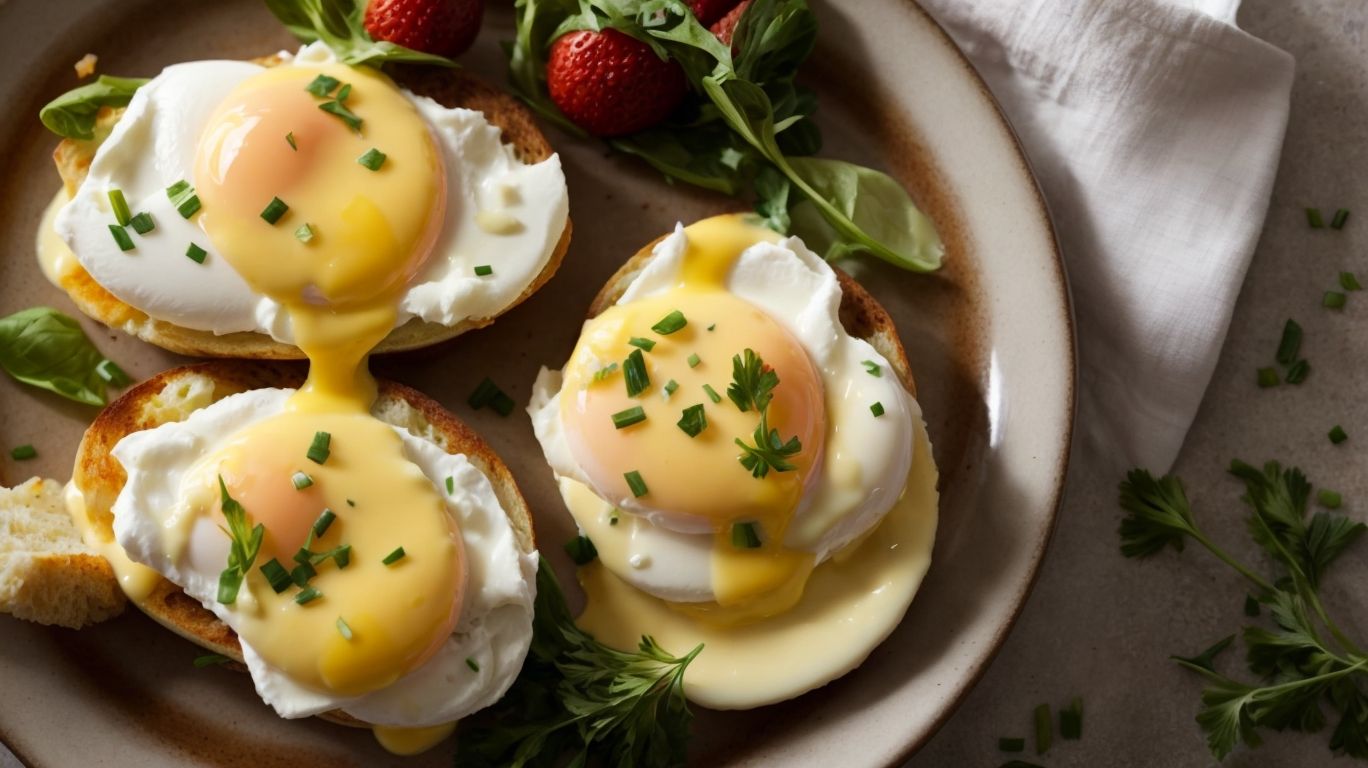
Credits: Poormet.Com – Jeremy Rodriguez
Assembling and plating Eggs Benedict involves layering toasted English Muffins with Canadian Bacon or Ham, poached eggs, and a generous drizzle of hollandaise sauce for a delightful presentation.
Once the base layers are assembled, the final touches are crucial to enhance the visual appeal of the dish. Carefully spoon the velvety hollandaise sauce over the top, allowing it to cascade down the sides naturally, adding both flavor and aesthetic value. For an extra burst of color and freshness, consider sprinkling some finely chopped chives or parsley on top as garnishes. This not only introduces a contrasting pop of green but also complements the rich and creamy texture of the dish. Arrange the Eggs Benedict on a clean plate, ensuring each component is visible and balanced, making it not only a satisfying meal visually but also a treat for the taste buds.”
Place Toasted English Muffins on the Plate
Start by placing the perfectly toasted English Muffins on the serving plates as the base of the Eggs Benedict dish.
This crucial step sets the stage for the layers of this classic breakfast delight. English Muffins provide a sturdy yet slightly sponge-like texture, ideal for soaking up the velvety hollandaise sauce and complimenting the richness of the poached eggs.
Positioning the toasted muffins evenly on the plates not only adds visual appeal but also ensures that each bite encompasses all the flavors harmoniously. Their crisp exterior contrasts beautifully with the luscious toppings, making every mouthful a symphony of tastes and textures.
Add Canadian Bacon or Ham on Top
Layer the cooked Canadian Bacon or Ham on top of the English Muffins, adding a savory and satisfying element to the Eggs Benedict ensemble.
Canadian Bacon and Ham are classic choices for enhancing the traditional Eggs Benedict dish. The Canadian Bacon offers a slightly smokier flavor compared to regular bacon, while the Ham adds a rich and salty note. Their meaty texture provides a contrast to the softness of the poached eggs and hollandaise sauce, creating a harmonious blend of flavors and textures. The subtle sweetness of Canadian Bacon or the robust flavor of Ham elevates the overall taste profile, making each bite a delightful experience.
Place Poached Eggs on Top of Meat
Carefully position the perfectly poached eggs on top of the Canadian Bacon or Ham, ensuring a visually appealing and delicious Eggs Benedict presentation.
Placing the poached eggs atop the warm, savory slices of Canadian Bacon or Ham is not just about presentation; it plays a crucial part in creating the perfect harmony of flavors in Eggs Benedict. The velvety yolks of the poached eggs ooze out when cut, blending with the saltiness of the bacon or ham, creating a delightful contrast of textures. This combination adds a richness that elevates the overall taste, making each bite a culinary experience to savor.
Drizzle Hollandaise Sauce on Top
Finish off the Eggs Benedict masterpiece by drizzling a generous amount of Hollandaise Sauce over the poached eggs for a decadent and flavorful touch.
As the final step in creating the perfect Eggs Benedict, the Hollandaise Sauce plays a crucial role in elevating the dish to a whole new level of richness and taste. When you pour the velvety sauce over the perfectly cooked poached eggs, it not only adds a luxurious shine but also infuses every bite with a creamy texture that complements the dish’s overall flavor profile.
The warm, buttery notes of the Hollandaise Sauce mingle effortlessly with the runny yolks of the poached eggs, creating a harmonious blend of flavors that dance on your taste buds with every bite. This heavenly sauce is the crowning glory of the Eggs Benedict, tying together all the individual components into a cohesive and unforgettable brunch experience.
Garnish with Lemon Wedges and Fresh Herbs
Add a finishing touch to the Eggs Benedict platter by garnishing with fresh lemon wedges and herbs to enhance the visual appeal and flavor profile of the dish.
To achieve an aesthetically pleasing presentation, carefully place the vibrant lemon wedges strategically around the dish. This pop of citrus will not only elevate the visual appeal but also provide a zesty contrast to the richness of the hollandaise sauce.
In terms of the herbs, consider using delicate sprigs of fresh chives or tender dill to add a burst of color and freshness. Sprinkle these herbs elegantly over the Eggs Benedict to bring a fragrant and flavorful dimension to each bite, giving a truly gourmet touch to the dish.
Frequently Asked Questions
How to Cook Eggs for Eggs Benedict?
Question: What is the traditional way to cook eggs for Eggs Benedict?
The traditional method for cooking eggs for Eggs Benedict is to poach them.
How to Cook Eggs for Eggs Benedict?
Question: What is the best way to poach eggs for Eggs Benedict?
The best way to poach eggs for Eggs Benedict is to use a pot of simmering water and a splash of vinegar to help the eggs keep their shape.
How to Cook Eggs for Eggs Benedict?
Question: Can I use a different cooking method for my eggs in Eggs Benedict?
While poaching is the traditional method, you can also use other cooking methods such as soft boiling or frying if you prefer.
How to Cook Eggs for Eggs Benedict?
Question: How can I achieve the perfect runny yolk for my Eggs Benedict?
The key to achieving the perfect runny yolk for Eggs Benedict is to cook the eggs for exactly 3 minutes and then immediately transfer them to an ice bath to stop the cooking process.
How to Cook Eggs for Eggs Benedict?
Question: How many eggs should I cook for a single serving of Eggs Benedict?
Typically, a single serving of Eggs Benedict requires 2 eggs. However, you can adjust the amount based on your personal preference.
How to Cook Eggs for Eggs Benedict?
Question: Can I use pre-cooked eggs for my Eggs Benedict?
Pre-cooked eggs are not recommended for Eggs Benedict as they may not have the desired texture and runny yolk. It is best to cook the eggs fresh for the best result.

